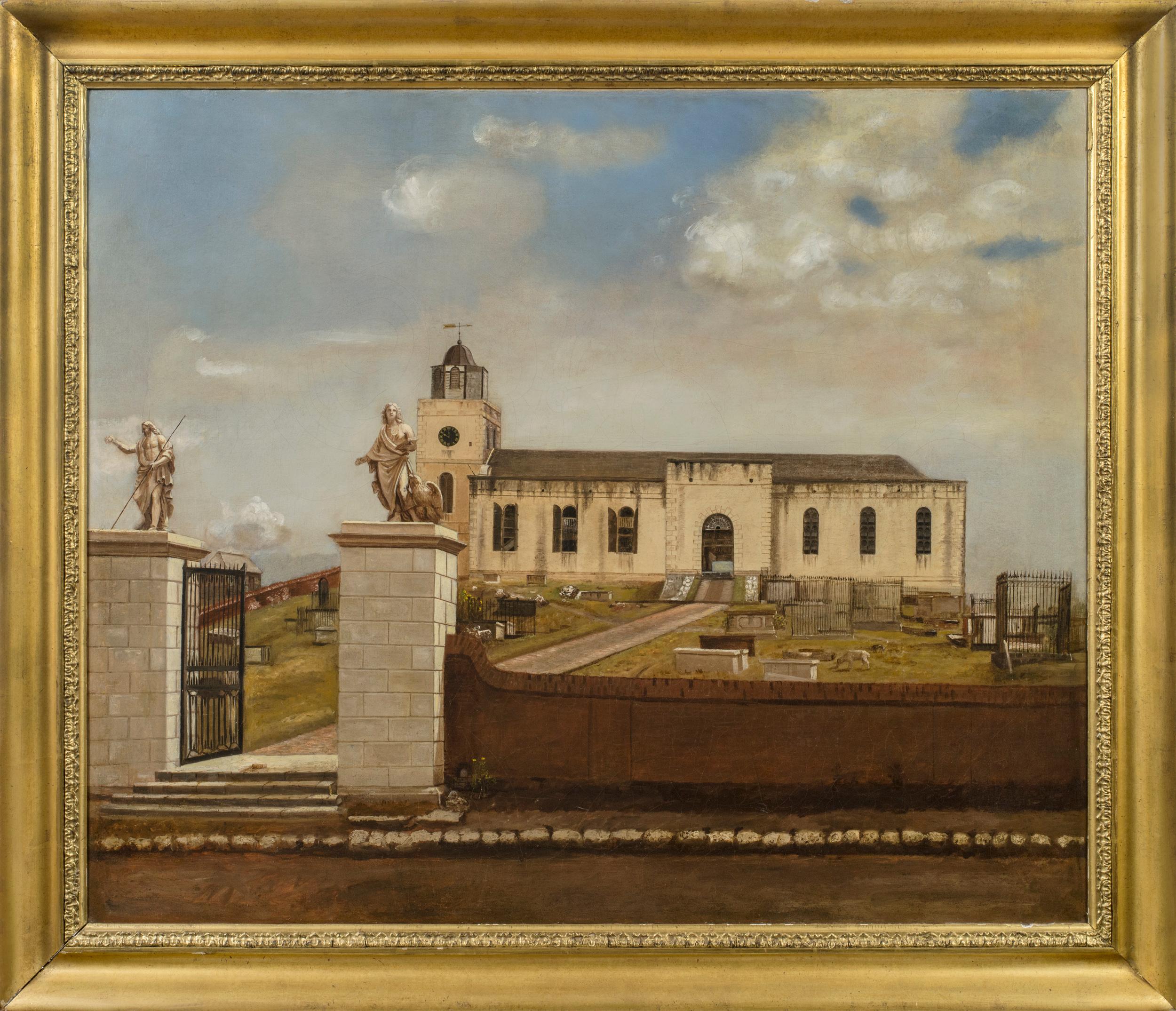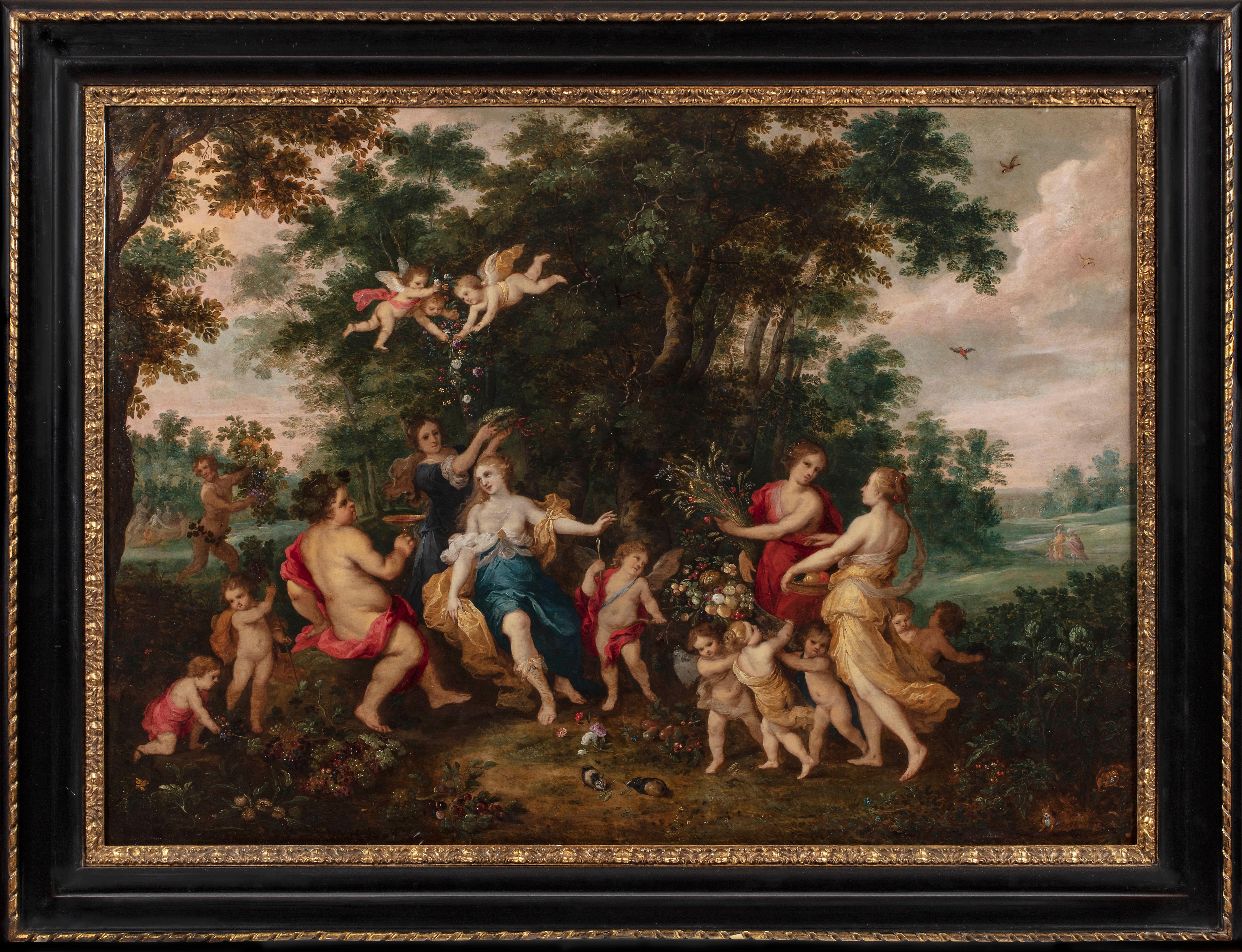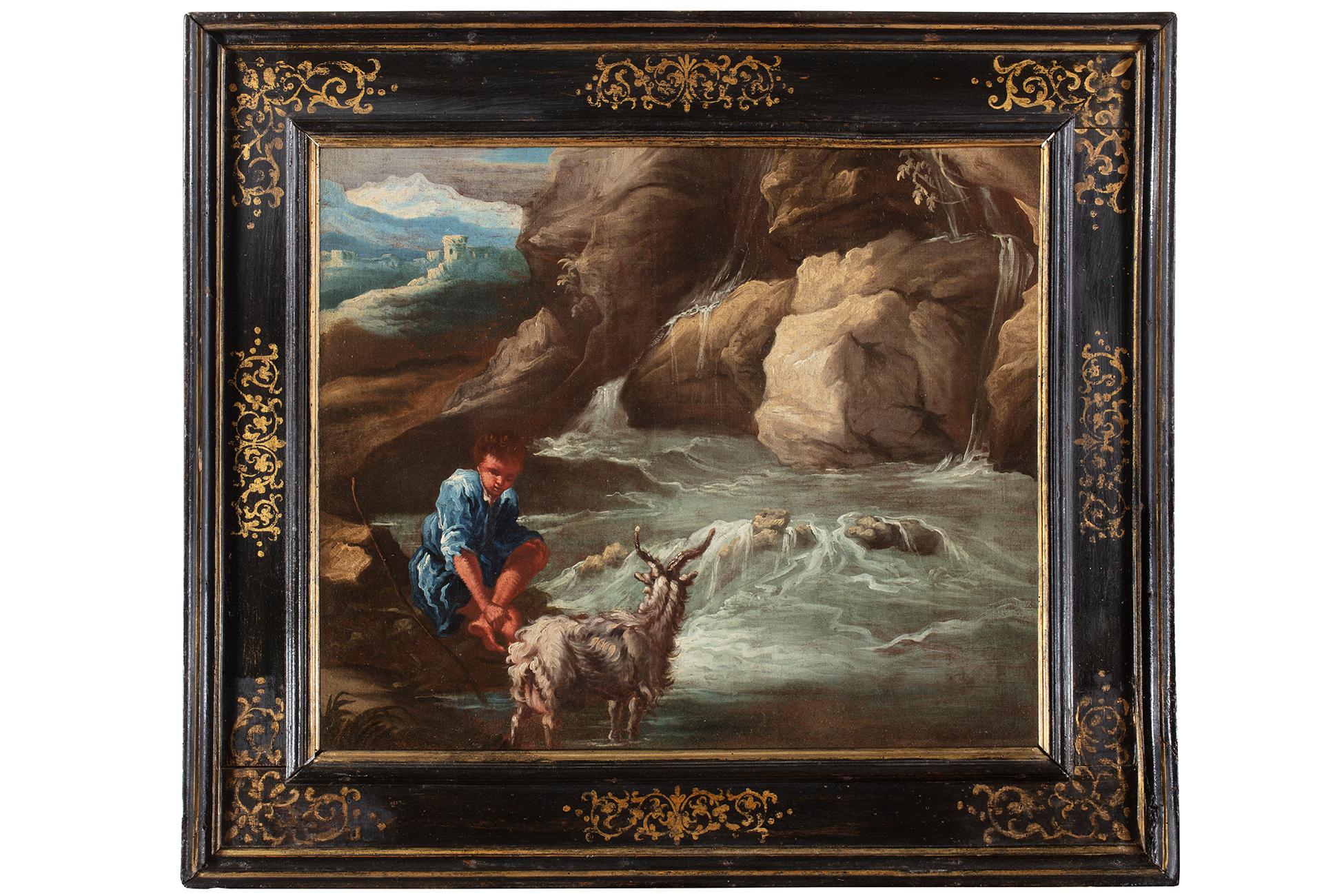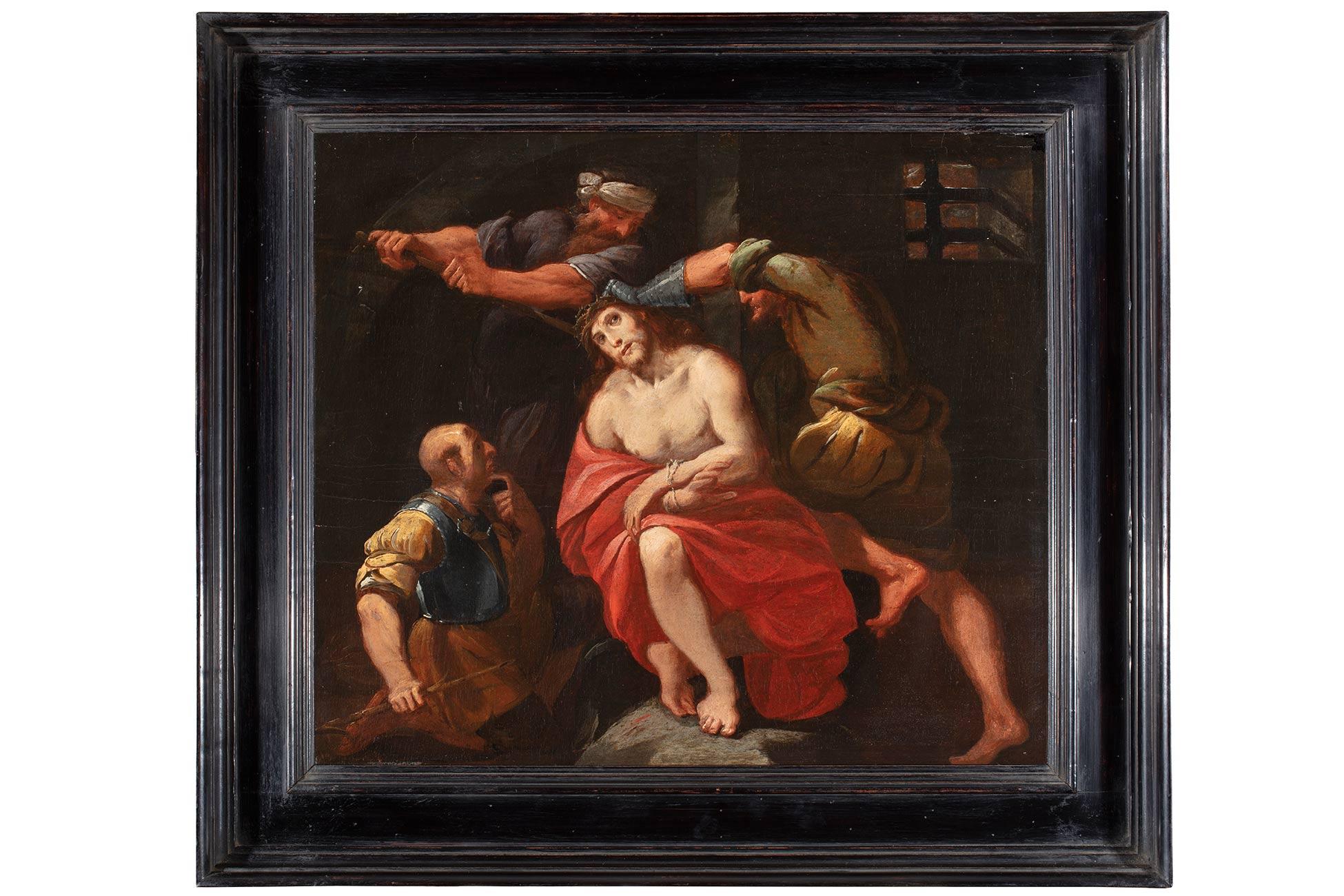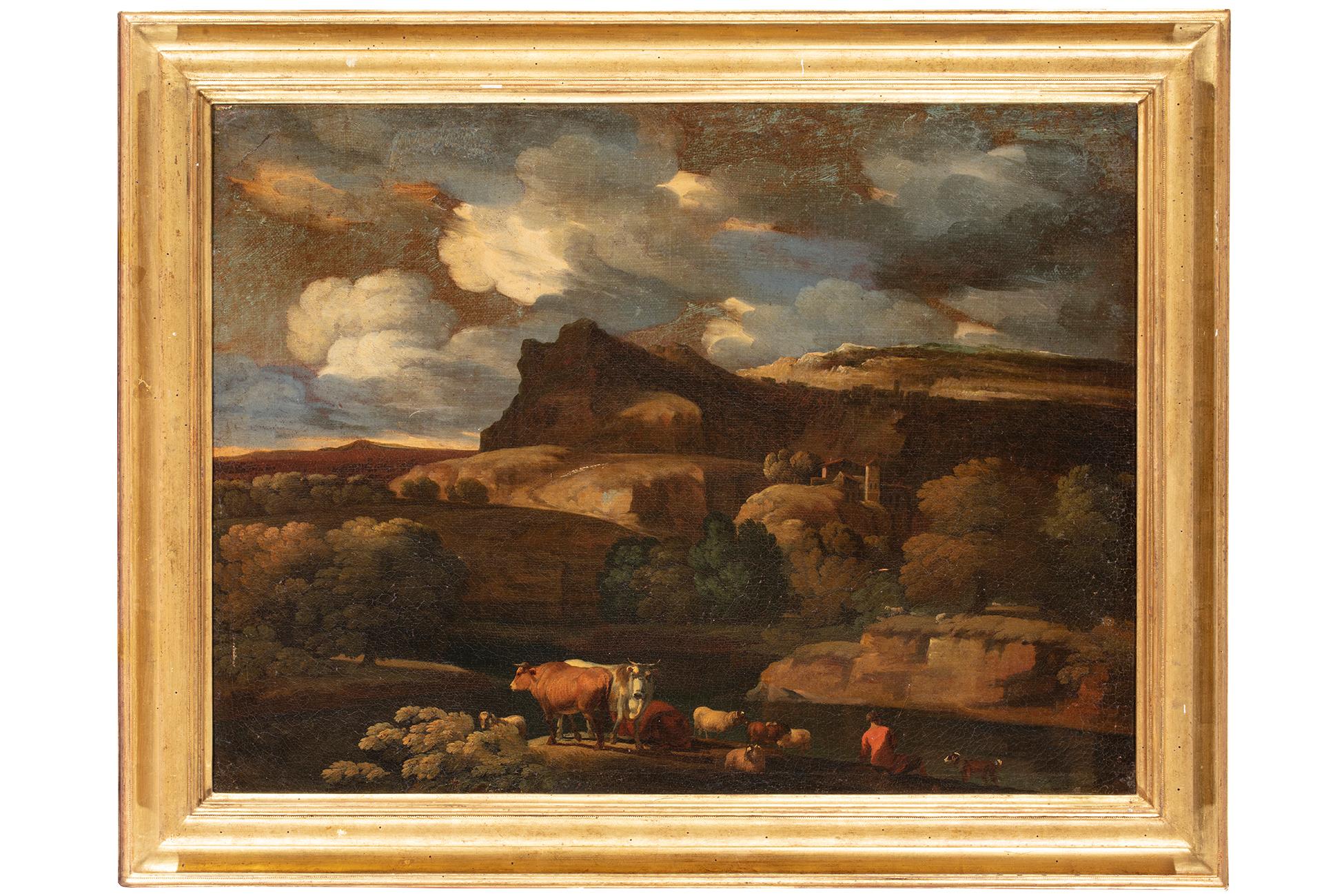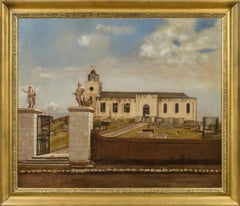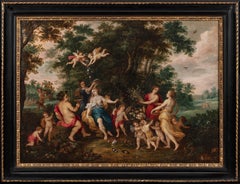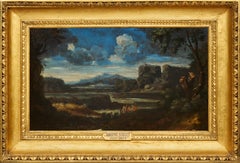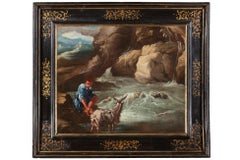Items Similar to King David Abigail Vleughels Paint 17/18th CEntury Oil on canvas Old master Art
Video Loading
Want more images or videos?
Request additional images or videos from the seller
1 of 21
King David Abigail Vleughels Paint 17/18th CEntury Oil on canvas Old master Art1680-1720
1680-1720
$9,854.24
£7,239.15
€8,320
CA$13,530.18
A$15,165.02
CHF 7,939.10
MX$187,127.29
NOK 99,729.87
SEK 93,877.47
DKK 63,309.06
Shipping
Retrieving quote...The 1stDibs Promise:
Authenticity Guarantee,
Money-Back Guarantee,
24-Hour Cancellation
About the Item
Nicolas Vleughels (Paris, 1668 - Rome, 1737) attributable
King David meets Abigail
oil on canvas 79 x 59 cm in frame 79 x 100 cm
The painting depicts the meeting between King David and Abigail, as recounted in the biblical text of the First Book of Samuel (I Samuel 25:1-34), and is a work attributable to Nicolas Vleughels (Paris, 1668 - Rome, 1737), a painter of Flemish origin who settled in France, where he studied with Pierre Mignard, and then in Rome, where he held the prestigious position of director of the Accademia di Belle Arti. - Rome, 1737), a painter of Flemish origin who settled in France, where he studied with Pierre Mignard, and then in Rome, where he held the prestigious position of director of the French Academy from 1724 for over a decade, thus becoming a key figure in the artistic exchange between France and Italy in the first third of the 18th century.
We know that he returned to this subject on several occasions during his career and, in particular, that he conceived this composition in the early 18th century.
One of the versions on canvas is now in the collection of the Hermitage Museum in St. Petersburg, made famous by Jeaurat Edme's engraving (Vermanton 1688 - Paris 1738), which reproduces the painting in reverse.
In the centre on the left is the figure of King David who, left without food in the desert with his army, asked in vain for help from the rich shepherd Nabal, who contemptuously refused any help, ungrateful for the kindness he had previously received from the king and unleashing his wrath with the imminent promise of revenge.
On the right is Abigail, Nabal's beautiful and wise wife, who decided to make amends for the wrongdoing and bring David food and gifts in abundance. When she arrived before the king, she knelt before him in submission, winning his forgiveness and goodwill.
David, proud and haughty, shows clemency and is fascinated by the diplomatic skills, beauty and humility of this woman who, only a few days later, will accidentally become a widow and whom he will want to marry.
The biblical event is the pretext, as was customary in modern painting, for staging a colourful description of a sumptuous procession, which can be divided into two mirror-image parts: on the left, David with his dignitaries and army, and on the right, Abigail's procession, with maids and servants carrying baskets full of fruit, bread and wineskins, so that the king and his army could be satisfied.
The crowded group of figures is set in a charming natural proscenium: above a low horizon, barely hinted at by distant blue mountains, a steep cliff rises on the left with a building that we believe could be the city of Hebron (in Palestine, near Jerusalem), where David and Abigail will go to live after their marriage.
ADDITIONAL INFORMATION:
The work is sold complete with a pleasant frame and is accompanied by a certificate of authenticity and a descriptive iconographic card.
We take care of and organise the transport of purchased works, both in Italy and abroad, through professional and insured carriers.
It is also possible to view the painting in the gallery in Riva del Garda, where we will be happy to welcome you and show you our collection of works.
Please contact us, without obligation, for any further information.
- Attributed to:Nicolas Vleughels (paris, 1668 - Rome, 1737)
- Creation Year:1680-1720
- Dimensions:Height: 31.11 in (79 cm)Width: 39.38 in (100 cm)
- Medium:
- Movement & Style:
- Period:
- Condition:
- Gallery Location:Riva del Garda, IT
- Reference Number:1stDibs: LU988116543552
About the Seller
4.9
Gold Seller
Premium sellers maintaining a 4.3+ rating and 24-hour response times
Established in 2017
1stDibs seller since 2018
246 sales on 1stDibs
Typical response time: <1 hour
- ShippingRetrieving quote...Shipping from: Riva del Garda, Italy
- Return Policy
Authenticity Guarantee
In the unlikely event there’s an issue with an item’s authenticity, contact us within 1 year for a full refund. DetailsMoney-Back Guarantee
If your item is not as described, is damaged in transit, or does not arrive, contact us within 7 days for a full refund. Details24-Hour Cancellation
You have a 24-hour grace period in which to reconsider your purchase, with no questions asked.Vetted Professional Sellers
Our world-class sellers must adhere to strict standards for service and quality, maintaining the integrity of our listings.Price-Match Guarantee
If you find that a seller listed the same item for a lower price elsewhere, we’ll match it.Trusted Global Delivery
Our best-in-class carrier network provides specialized shipping options worldwide, including custom delivery.More From This Seller
View AllChrist Angels Pietro Da Cortona Paint Oil on canvas Old master 17th Century Art
Located in Riva del Garda, IT
Christ surrounded by angels in the desert
Circle of Pietro da Cortona, born as Pietro Berrettini (Cortona 1597 - Rome 1669)
Oils on canvas (66 x 50 cm. - in frame 80 x 64 cm.)
The ...
Category
17th Century Old Masters Paintings
Materials
Oil
$8,499 Sale Price
20% Off
Madonna Scarsella Paint Oil on canvas Old master 16/17th Century Raffaello Art
Located in Riva del Garda, IT
Ippolito Scarsella, known as Lo Scarsellino (Ferrara, around 1550 - 1620) workshop
Altarpiece depicting the Madonna and Child, St. James the Greater and the donor in armour
Technique: oil on panel
Measurements: 93 x 72 cm./with frame 109 x 86 cm.
Provenance: Prato, Farsetti, auction of 28.10.2016, lot 261 (link)
A majestic Madonna in Glory occupies the upper register of the canvas, seated on a blanket of iridescent clouds surrounded by angels, flanked by a cherub who scatters flowers contained in a cornucopia towards the infant Christ as a sign of abundance, naked and supported with both hands from the mother.
In the lower part of the composition stands the figure of San Giacomo Maggiore, one of the twelve apostles, standing on the right side of the altarpiece, represented dressed in a humble tunic; one arm holds the open Gospel book, while the other holds a cross pilgrimage staff.
A particular aspect of the table is the presence in the central part, to indicate its importance, of the figure of the donor, kneeling on a cushion, with his hands joined in prayer and his face observing the Virgin in an attitude of devotion, while on the opposite lectern is placed a prayer book; depicted with the features of a young leader in armor, with a sword and a rich iridescent red cloak, elements which, combined with his authoritarian composure, enhance his ennoblement.
Unlike the medieval altarpieces, the knight is here included in the space of the painting and has proportionate dimensions to those of the other characters, returning to all intents and purposes in the sacred scene, with a pose that cannot but evoke the detail of the 'Montefeltro altarpiece' made by Piero della Francesca for Federico da Montefeltro, kneeling in front of the sacred group in the guise of a leader.
On the right, the view recedes into depth highlighting the background of an urban landscape set on a hill behind which a mountain range stands out, with the peculiarity of the arched aqueduct that runs along the entire landscape. Presumably among these expanses were the donor's own possessions and his hometown.
It is a quality table, imbued with the late Mannerist style still resistant in the second half of the 16th century, characterized by a 'sweet and affable religiosity, rendered through a manner of studied simplicity and grace', which highlights the unmistakable stylistic and chromatic connotations of the produced...
Category
16th Century Old Masters Paintings
Materials
Oil
$10,470 Sale Price
20% Off
Poussin Moses Landscape Old master Oil on canvas Paint 17th Century Italy Art
By Nicolas Poussin (Les Andelys 1594 - Rome 1665)
Located in Riva del Garda, IT
Nicolas Poussin (Les Andelys 1594 - Rome 1665) Workshop of
Little Moses found by Pharaoh's daughter
Oil painting on canvas
Measurements: canvas 45 x 59 cm.,
in frame 57 x 71 cm.
We present this splendid work representing the episode, taken from the Old Testament, of the finding of little Moses by the daughter of the Pharaoh (Exodus 2, 1-10), and which reveals from the first glance the unequivocal pictorial style of the painter. Nicolas Poussin (Les Andelys 1594 - Rome 1665).
Poussin spent most of his life in Rome giving life to works capable of fusing the ideal of French classicism...
Category
17th Century Old Masters Paintings
Materials
Oil
$8,499 Sale Price
41% Off
Landscape Marina Van Der Velde Old master 17th Century Signed Flemish Paint
Located in Riva del Garda, IT
Quality work attributed to the painter Peter Van Der Velde (Antwerp 1634 - c.1714) - Monogrammed
Coastal view with vessels and perched castle
Oil painti...
Category
17th Century Old Masters Paintings
Materials
Oil
$14,511 Sale Price
35% Off
Landscape Marina See Van Der Velde Paint Oil on canvas Old master 17th Century
Located in Riva del Garda, IT
Quality work attributed to the painter Peter Van Der Velde (Antwerp 1634 - c.1714)
Coastal view with fortified city and boats (city of Antwerp?)
Oil pa...
Category
17th Century Old Masters Paintings
Materials
Oil
$12,009 Sale Price
35% Off
Coastal Landscape See Paint Lacroix de Marseille Oil on canvas 18th Century Art
Located in Riva del Garda, IT
Coastal view at sunset with fishermen and boats
Atelier of Charles François Grenier De Lacroix, called de Marseille (Marseille 1700 - Berlin 1782)
Oil on canvas
50 x 62 cm. - in fra...
Category
18th Century Old Masters Paintings
Materials
Oil
$7,267 Sale Price
20% Off
You May Also Like
View of St. John’s Cathedral, Antigua
Located in New York, NY
Provenance:
Robert Hollberton, Antigua, ca. 1841
Private Collection, New York
The present painting depicts Old St. John’s Cathedral on the island of Antigua. The church was erected in the 1720s on the designs of the architect Robert Cullen. It measured 130 feet by 50 feet with north and south porches 23 x 20 ½ feet. The tower, 50 feet high with its cupola, was added in 1789. The church was elevated to the status of a cathedral, but disaster struck in the form of an earthquake that destroyed the building on 8 February 1843. A memorandum of that date relates the event:
“On Wednesday, 8th February, 1843, this island was visited by a most terrific and destructive earthquake. At twenty minutes before eleven o’clock in the forenoon, while the bell was ringing for prayers, and the venerable Robert Holberton was in the vestry-room, awaiting the arrival of persons to have their marriage solemnized, before the commencement of the morning service, the whole edifice, from one end to the other, was suddenly and violently agitated. Every one within the church, after the first shock, was compelled to escape for his life. The tower was rent from the top to the bottom; the north dial of the clock precipitated to the ground with a dreadful crash; the east parapet wall of the tower thrown upon the roof of the church; almost the whole of the north-west wall by the north gallery fell out in a mass; the north-east wall was protruded beyond the perpendicular; the altar-piece, the public monument erected to the memory of lord Lavington, and the private monuments, hearing the names of Kelsick, Warner, Otley, and Atkinson, fell down piecemeal inside; a large portion of the top of the east wall fell, and the whole of the south-east wall was precipitated into the churchyard, carrying along with it two of the cast-iron windows, while the other six remained projecting from the walls in which they had been originally inserted; a large pile of heavy cut stones and masses of brick fell down at the south and at the north doors; seven of the large frontpipes of the organ were thrown out by the violence of the shock, and many of the metal and wooden pipes within displaced; the massive basin of the font was tossed from the pedestal on which it rested, and pitched upon the pavement beneath uninjured. Thus, within the space of three minutes, this church was reduced to a pile of crumbling ruins; the walls that were left standing being rent in every part, the main roof only remaining sound, being supported by the hard wood pillars.”
The entrance from the southern side into the cathedral, which was erected in 1789, included two imposing statues, one of Saint John the Divine and the other of Saint John the Baptist in flowing robes. It is said that these statues were confiscated by the British Navy from the French ship HMS Temple in Martinique waters in 1756 during the Seven Years’ War and moved to the church. The statues are still in situ and can be seen today, much as they appeared in Bisbee’s painting, but with the new cathedral in the background (Fig. 1).
Little is known of the career of Ezra Bisbee. He was born in Sag Harbor, New York in 1808 and appears to have had a career as a political cartoonist and a printmaker. His handsome Portrait of President Andrew Jackson is dated 1833, and several political lithographs...
Category
19th Century Old Masters Landscape Paintings
Materials
Canvas, Oil
Allegory of Abundance
Located in New York, NY
Painted in collaboration with Hendrick van Balen (Antwerp, 1575 – 1632).
Provenance: Private Collection, Uruguay, since the 1930s.
The eldest son of Jan Br...
Category
17th Century Old Masters Paintings
Materials
Copper
Italian Landscape with Jack Players, a painting by Gaspard Dughet (1615 - 1675)
By Gaspard Dughet
Located in PARIS, FR
Here Gaspard Dughet offers us an idyllic vision of the Roman countryside. The stages follow one another in a perfectly structured composition, revealing here a lake, there travellers walking along, gradually leading our eye to the blue horizon. But behind its classical composition, this landscape is particularly interesting because of three anthropomorphic details that the artist has hidden, opening the way to a radically different interpretation...
1. Gaspard Dughet, a landscape artist in the light of Poussin
Gaspard Dughet was born on June 4th, 1615 in Rome where his father, of French origin, was a pastry cook. He was probably named Gaspard in honour of his godfather Baron Gaspard de Morant, who was, or may have been, his father's employer. His older sister Jeanne married the painter Nicolas Poussin (1594 - 1655) on September 1st, 1630. The young Gaspard was apprenticed with his brother-in-law at the beginning of 1631, which led his entourage to name him Gaspard Poussin. The first preserved works of the painter date from the years 1633-1634 and were painted in Poussin’s studio.
Around 1635, Gaspard Dughet became emancipated and began to frequent the Bamboccianti circle. In 1636, he became friends with the painter Jean Miel (1599 - 1656), but also with Pier Francesco Mola (1612 - 1666) and Pietro da Cortona (1596 - 1669).
This was also the time of his first trips throughout Italy. The painter, although of French origin, appears never to have visited France. In 1646 he settled permanently in Rome. A recognized painter with a solid book of orders, he remained faithful to landscape painting throughout his life, alternating between cabinet paintings and large decorative commissions, using both oil and fresco.
Nailed to his bed by rheumatic fever at the age of 58, he died on May 25, 1675.
2. Discovering an idealized landscape
Beyond a relatively dark foreground that takes us into the landscape, we discover a vast bluish horizon: a plateau surrounded by deep ravines advances to the right, overhanging an expanse of water that sparkles below. A road winds through a mountainous mass as if leading us to the fortress that crowns it; another town appears in the distance at the foot of three conical mountains.
The composition is rigorous, mineral, and structured by geometric volumes. The various stages in the landscape lead one to the next attracting the eye towards the horizon located in the middle of the canvas. The general impression is that of a welcoming and serene nature.
In many places the paint layer has shrunk, or become transparent, revealing the dark red preparation with which the canvas was covered and accentuating the contrasts.
Human presence is limited to three jack players, leaning against a mound in the foreground. Their long garments, which may evoke Roman togas, contribute to the timelessness of the scene.
Close examination of the canvas reveals two other travellers on the path winding between the rocks. Made tiny by the distance, their introduction in the middle register, typical of Dughet's art, lengthens the perspective.
While it is difficult to date the work of a painter who devoted his entire life to the representation of landscapes, it is certain that this painting is a work from his later years. The trees that occupied the foreground of his youthful compositions have been relegated to the sides, a stretch of water separates us from the arid mountains counterbalanced by two trees represented on the opposite bank. The introduction of this stretch of water in the middle of the landscape betrays the influence of the Bolognese and in particular of the Dominiquin (1581 - 1641)
A number of similarities with a drawing in the British Museum might suggest a date around 1656-1657, since, according to Marie-Nicole Boisclair , it has been compared with the Prado's Landscape with the Repentant Magdalene, painted at that period.
3. Three amazing anthropomorphic details
While some late Renaissance landscapes offer a radical double reading, allowing one to see both a face or a human body behind the representation of a landscape, it seems interesting to us to hypothesize that Gaspard Dughet had fun here by slipping in a few details that, taken in isolation, evoke human or animal figures.
We will give three examples, looking closely at a cloud, the trunk of a broken tree and the top of a cliff.
The main cloud could thus evoke a Christ-like face or that of an antique god...
Category
1650s Old Masters Landscape Paintings
Materials
Oil
18th Century by Giuseppe Pianca Shepherd with Goat and River Oil on Canvas
Located in Milano, Lombardia
Giuseppe Antonio Pianca (Agnona di Borgosesia, Italy, 1703 - Milan, Italy, 1762)
Title: Shepherd with Goat and River
Medium: Oil on canvas
Dimensions: without frame 49 x 57 cm - wit...
Category
18th Century Old Masters Landscape Paintings
Materials
Canvas, Cotton Canvas, Oil
17th Century by Giovan Battista Discepoli Coronation of Thorns Oil on Panel
Located in Milano, Lombardia
Giovan Battista Discepoli, also called the "Zoppo from Lugano" [Castagnola (Lugano), Switzerland, 1590 - Lugano, Switzerland, 1654]
Title: Coronation of Thorns
Medium: Oil on panel
D...
Category
Early 17th Century Old Masters Landscape Paintings
Materials
Oil, Panel
17th Century by Pieter Mulier Landscape Oil on Canvas
By Pieter Mulier known as the Cavalier Tempesta (Haarlem 1637 - Milan 1701)
Located in Milano, Lombardia
Pieter Mulier known as Tempesta (Haarlem, Netherland, 1637 - Milan, Italy, 1701)
Title: Landscape
Medium: Oil on canvas
Dimensions: without frame 49 x 65...
Category
17th Century Old Masters Landscape Paintings
Materials
Canvas, Cotton Canvas, Oil
